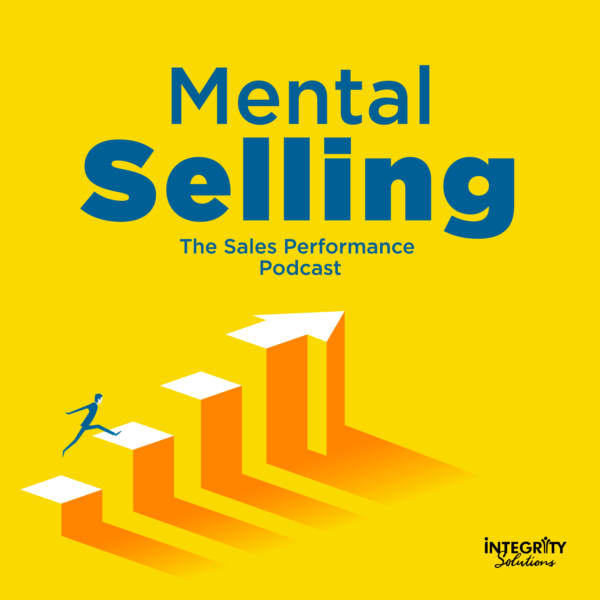

In our conversation, we discuss:
- Employee engagement and retention in today’s hybrid work environment
- Developing and coaching employees based on what they need not what leaders assume
- Leaders’ responsibility in helping their people ‘fall forward’ and continuous growth
- Understanding the synergy between sales and customer service (from the customer’s view)
Establishing employee motivation strategies and keeping employee morale high towards the goals that don’t just help their career development but are also set towards our customer’s needs is vital to a company’s success.
Join us on this latest episode of Mental Selling to learn more about how companies and leaders need to pivot in order to attract, develop and retain great talent and high-performing teams. Check out the full episode! Click the link above!
Hybrid work environmental impact on employee motivation and engagement
The growing focus on remote and hybrid work has revealed many challenges, many of which were unexpected. However, one of the significant challenges that companies still struggle to address is employee engagement and connection.
Employees who don’t feel engaged or connected are likely to churn. Retention relies heavily on employee engagement across all levels of the organization. What was once as easy as chatting in the break room, swinging by a desk for input, or simply seeing co-workers face to face daily is now much more challenging as people work from the comfort of their home offices.
Employee engagement in the new hybrid and remote environment is a shared struggle as companies work towards connectivity and collaboration in groundbreaking ways.
According to Elisa, recognizing that engagement is a challenge worth sharing is critical to finding a strategy that works for your company.

Some people are more gifted and interested in face-to-face experiences, while others are skilled in designing collaborative efforts.
Instead of excusing potential opportunities in the name of leadership, collaborate with your team members and capitalize on their strengths. Recognize the value of each employee’s skills, experiences, and knowledge.
Coaching employees based on what they need
Another mistake that leadership often makes is coaching and developing based on what they assume employees need rather than considering what employees actually need. Make sure that you’re addressing employee need by involving them in coaching and development direction decisions.
Determining what matters to employees is one of the first steps to nurturing employee engagement.
Elisa offers insight into how leaders can increase engagement, help employees fall forward, and foster continuous growth and improvement.
Go to your customer, walk the halls, speak to their customers, and find out what they truly need. Then, as needs change, continue to be invested in the end customer. By investing in continuous discovery and fostering genuine curiosity, you can begin to aim your organization toward customer-centricity.
“Take care of your people, because it’s the people, at the end of the day, who matter to the brand and reputation of the organization.”
–Elisa Matthews
Set clear expectations from the beginning
Instead of putting hybrid and remote employees on the spot, set clear expectations from the get-go. Face-to-face meetings offer numerous benefits to distance-workers. But, asking employees to turn their camera on without warning can lead to frustration and discomfort.
Clearly communicate expectations with employees prior to interactions, preferably during onboarding or the implementation of a system. When employees know what to expect, they can bring their best to the table.
Employee motivation begins with human connection
Some benefits of remote and hybrid work include flexibility, convenience, and lounge wear. But, these benefits often come at the cost of actual human connection.
When employees and leadership only ever interact via email, chat or by phone, many social and physical cues are lost in translation. Regularly seeing someone face-to-face, even in a hybrid or remote environment, is crucial for engagement.
Schedule regular video calls to establish and maintain a more personalized connection.
Combating employee burnout
Burnout is cited as one of the biggest reasons that people leave jobs. As many as 40% of employees said they had left a position due to burnout.
One of the best ways to ensure that your top sales talent is retained includes combating burnout. Leaders can play an integral part in ensuring that each employee feels valued and recognized for the work they put in.
Leaders’ responsibility in maintaining employee motivation: Helping their people ‘fall forward’
According to Elisa, one of the biggest mistakes that leaders make when the going gets tough is not trusting their team.
Rather than leaning into the strengths of each member, connecting with transparency, and working together to move forward, leaders can too often hunker down.
You cannot achieve true employee engagement and results without changing how things are done. The workplace environment has changed and continues to morph to fit today’s team needs. If you want to attract and retain top sales talent, you also need to evolve to meet their needs and foster engagement company-wide.
Employee Motivation and Company Goals Podcast Related Links
Follow Elisa on LinkedIn
Allied Solutions website
Follow Allied Solutions on Twitter
Raise your Mental Selling acumen with us by following us on Apple Podcasts, Spotify, Google Podcasts SoundCloud, Amazon, iHeartRadio, Stitcher or wherever you get your podcasts. Please rate our show or leave a comment— we value YOUR feedback! FeedSpot has also included us as one of the top 30 best sales podcasts to follow.

